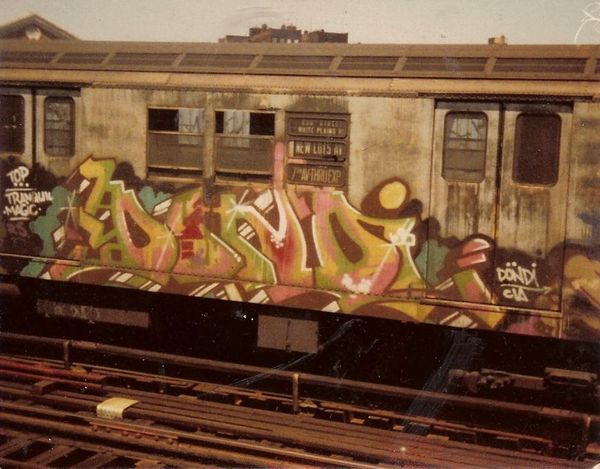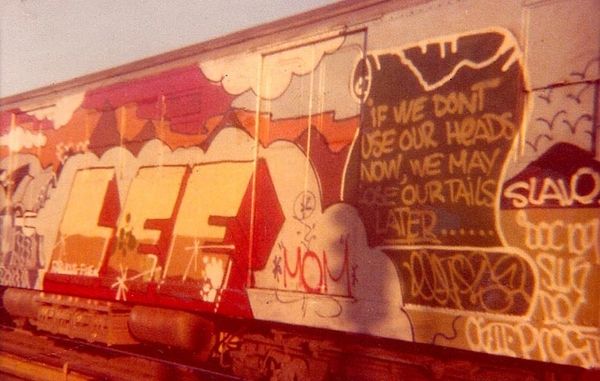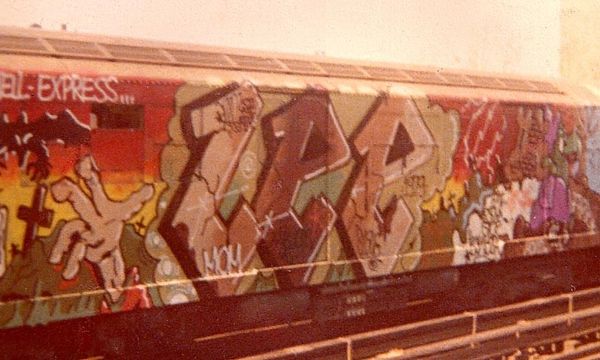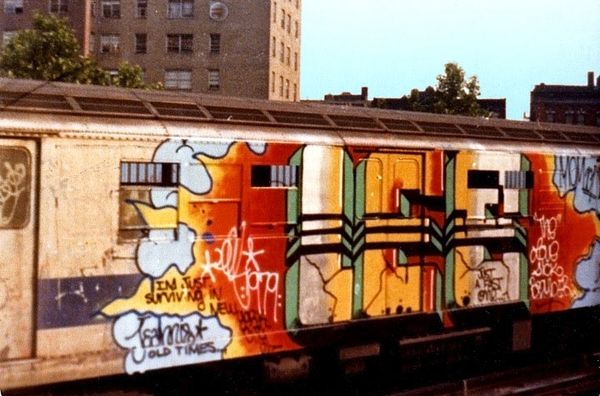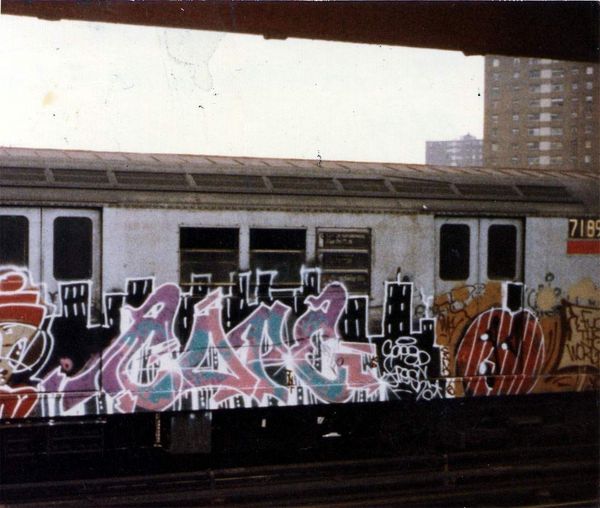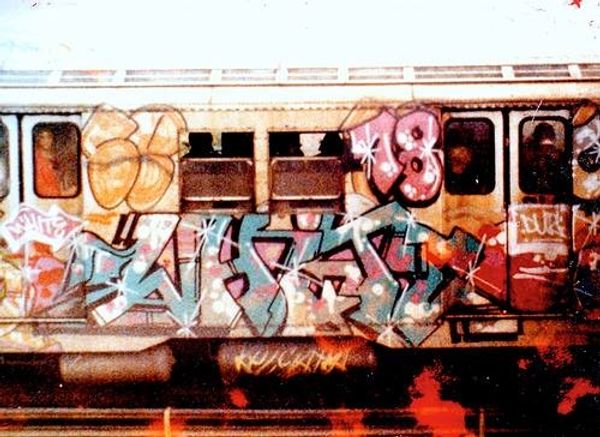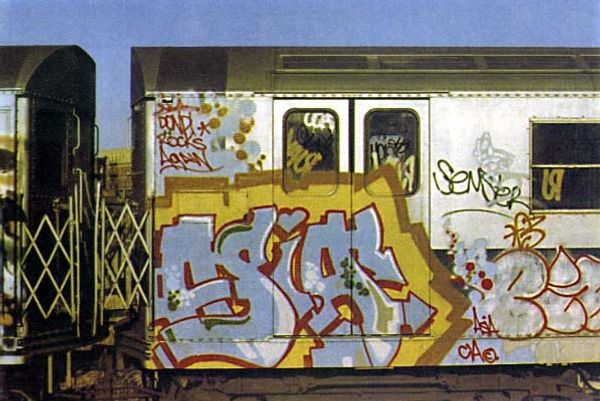
Copyright: Lee Quinones,Fair Use
Curator: Seeing this photograph of Lee Quiñones’ “Silent Thunder” from 1981 always feels like finding a lost chord in the city's symphony. It's painted with acrylics right on a subway car, a fleeting masterpiece rolling through the urban veins. What grabs you first? Editor: The raw immediacy, definitely. You see the labor right there—the scale, the movement implied in applying all that paint, the grit that's unavoidable when you're dealing with a surface like that. It isn’t trying to hide anything about its making. Curator: Exactly! It’s like Quiñones transformed this train into a roaring metal canvas, each panel bursting with these vibrant cityscapes and ethereal figures. Do you feel the push and pull between the physical grind of the subway and the dreamlike visions painted on it? Editor: Absolutely, and I think it gets to a broader tension of that era. This wasn't just spontaneous creation, but it was also an illicit act that played into larger forces of the era: subcultures staking a claim in the physical infrastructure and economy of urban spaces often not designed to serve them. Curator: I’ve always seen it as Quiñones giving a voice to the voiceless, liberating the steel beast through pure, unadulterated imagination. He made it sing its own urban blues. It makes me wonder about who gets to shape our visual landscape, our shared reality, and where they can find the space. Editor: And that’s an ongoing negotiation. You see how artists adapted tools like spray paint to this scale, innovating methods on the fly. The use of acrylic is really interesting in relation to availability, cost, durability—it's not just artistic choice. Curator: Right! You can practically feel the pulse of 1980s New York emanating from every line and splash of color. To me it feels almost dreamlike. You said the immediacy grabs you. For me, it’s that tension. It reminds us that art can—and should—disrupt and reimagine our everyday surroundings. Editor: The sheer temporality of it, too. "Silent Thunder" existed in motion, its reception dictated by the rhythm of the rails. How do we measure value and success of art outside conventional institutions? Curator: Well, thinking about “Silent Thunder”, its roar still echoes through the streets today. A vibrant and restless assertion, captured only in images like this. Thanks for this glimpse into the spirit that propelled its creation! Editor: Likewise! Analyzing the painting on this subway car as a conscious reaction to a particular moment enriches our experience. We gain deeper insights when we are thinking of a larger history about public works.
Comments
No comments
Be the first to comment and join the conversation on the ultimate creative platform.




